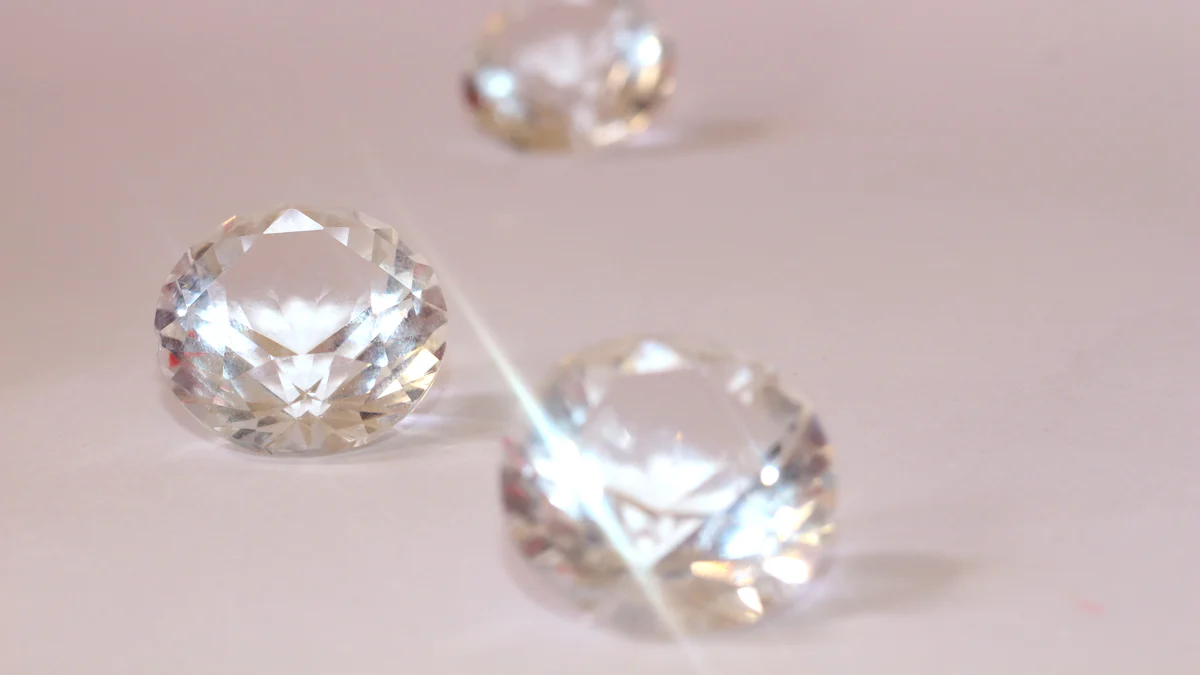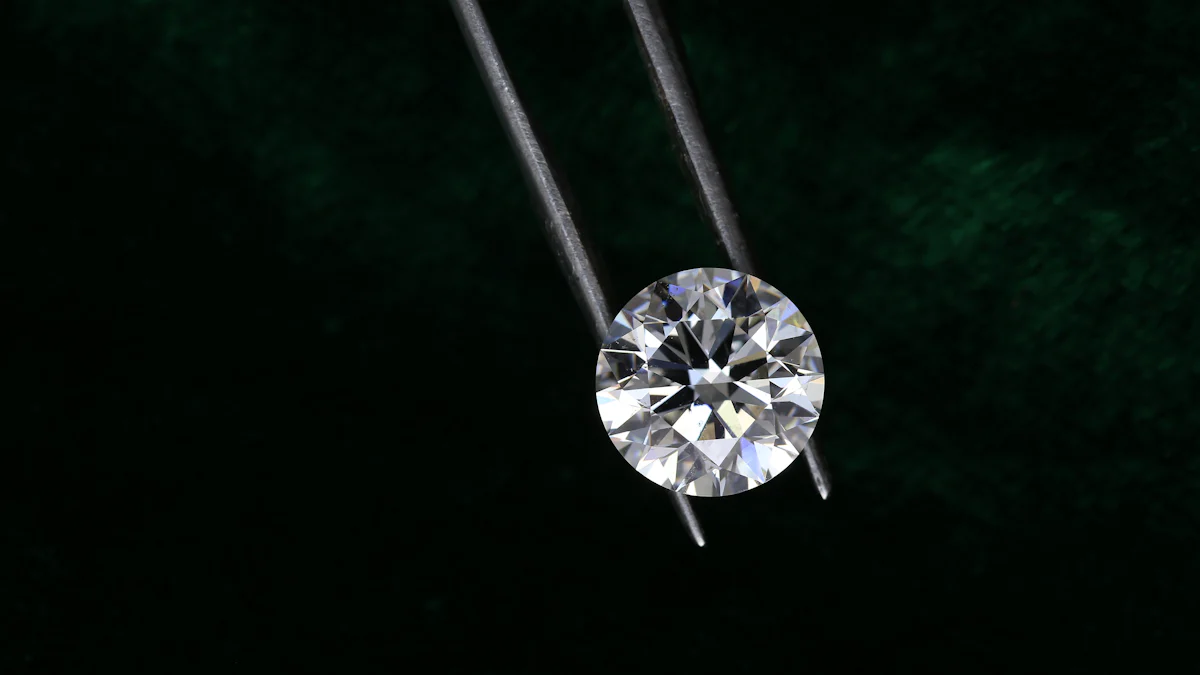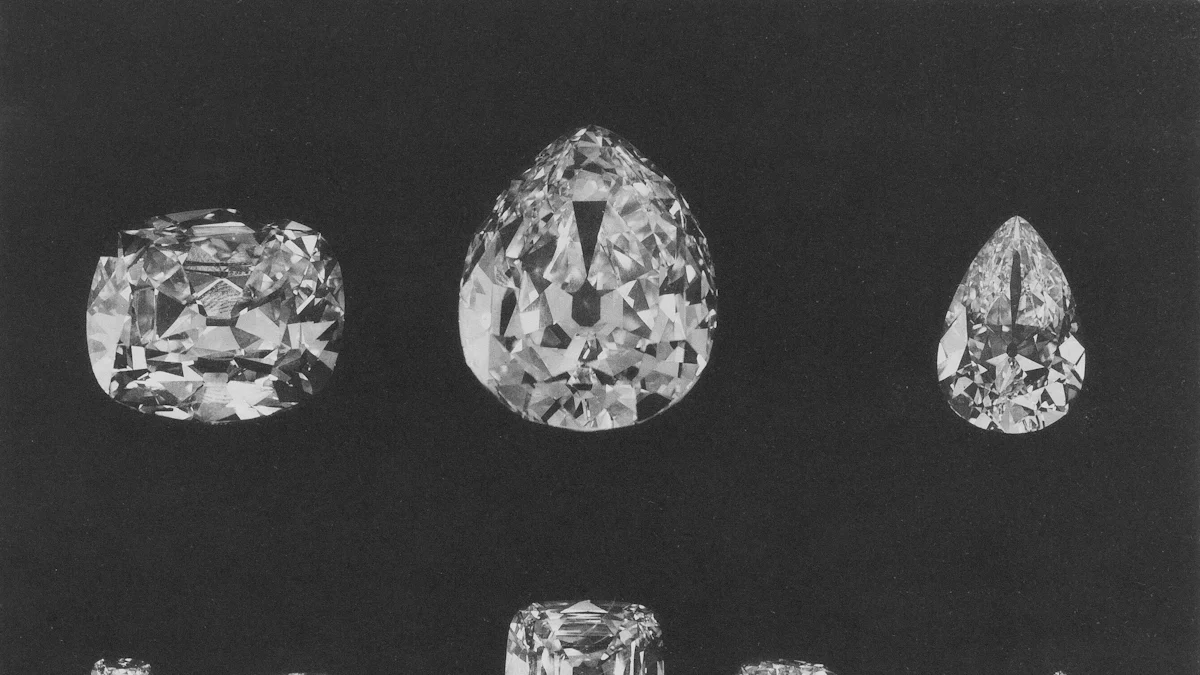Analyzing the Diamond Color Chart

The diamond color chart serves as a crucial tool for understanding the visual differences in diamond colors. This chart grades diamonds from D to Z, with D representing completely colorless stones and Z indicating a noticeable yellow tint. Most diamonds used in jewelry fall within the D to M range. You will find that diamonds with less color are rarer and thus more valuable. For instance, D color diamonds, known for their complete colorlessness, command a premium price. By familiarizing yourself with the diamond color chart, you can make informed decisions about the value and appearance of diamonds.
Key Takeaways
- Familiarize yourself with the diamond color chart, which ranges from D (colorless) to Z (noticeable color), to make informed purchasing decisions.
- Choose diamonds graded D to F for maximum brilliance and value, as they are the rarest and most sought after.
- Consider near colorless diamonds (G to J) for a balance between appearance and cost, as they often look colorless in most settings.
- Diamonds graded K to Z are more affordable and can still be beautiful; their color can be enhanced by the right setting.
- Remember that the diamond's setting, shape, and size can significantly affect how its color is perceived, so choose wisely.
- Consult with a qualified gemologist to align your diamond choice with your budget and personal preferences.
- Prioritize your personal taste when selecting a diamond color, balancing it with your financial considerations for the best outcome.
Understanding the Diamond Color Grading Scale

The diamond color chart plays a vital role in determining the quality and value of diamonds. This chart, ranging from D to Z, helps you understand the subtle differences in diamond colors. Let's explore the different categories within this scale.
Colorless Diamonds (D-F)
Diamonds graded D, E, and F are considered colorless. These diamonds are rare and highly sought after for their lack of color. A D-grade diamond is completely colorless, making it the most valuable. E and F grades also appear colorless to the naked eye, though they may have minute traces of color detectable under magnification. When you choose a diamond from this range, you select a stone that offers exceptional brilliance and purity.
Near Colorless Diamonds (G-J)
Diamonds in the G to J range are classified as near colorless. These diamonds show slight color, but it is often difficult to detect without comparison to higher-grade stones. G and H diamonds offer excellent value, as they appear nearly colorless in most settings. I and J diamonds may show a hint of warmth, especially in larger sizes, but they remain a popular choice for those balancing quality and budget. You can often find these diamonds in jewelry, as they provide a good balance between appearance and cost.
Faint to Light Color Diamonds (K-Z)
Diamonds graded K through Z exhibit noticeable color, ranging from faint to light yellow or brown. K to M diamonds have a slight yellow tint, which becomes more apparent as you move down the scale. These diamonds are less expensive, making them an option for those prioritizing size or other features over colorlessness. As you consider diamonds in this range, remember that the setting and lighting can influence how the color appears. You might find that a well-chosen setting can enhance the beauty of these diamonds.
Understanding the diamond color chart helps you make informed decisions when selecting a diamond. By knowing the characteristics of each grade, you can choose a diamond that aligns with your preferences and budget.
How Diamond Color Affects Value and Appearance

The color of a diamond significantly influences its value and appearance. Understanding how color impacts these aspects can guide you in making informed purchasing decisions.
The Role of Color in Diamond Pricing
The diamond color chart plays a crucial role in determining the price of a diamond. Diamonds with less color, such as those graded D, E, and F, command higher prices due to their rarity and perceived purity. A D color diamond, for instance, is completely colorless and often indistinguishable from an E or F color diamond to the naked eye. However, it carries a significant price premium because of its complete lack of color.
When you consider diamonds in the G, H, and I range, you find a balance between appearance and cost. These diamonds appear nearly colorless when set in jewelry and viewed under normal conditions. They offer excellent value, as they provide a similar visual appeal to higher-grade diamonds without the hefty price tag.
In contrast, diamonds graded K through Z exhibit more noticeable color, which typically results in a lower price. These diamonds may show a faint yellow or brown tint, but they can still be beautiful choices, especially if you prioritize size or other features over colorlessness.
Visual Impact of Diamond Color
The color of a diamond affects its visual impact and overall appeal. Colorless diamonds, such as those in the D to F range, are prized for their brilliance and purity. They reflect light exceptionally well, creating a dazzling effect that enhances their beauty.
Near colorless diamonds, like those graded G to J, also offer a pleasing appearance. While they may have slight color, it is often difficult to detect without direct comparison to higher-grade stones. These diamonds can appear nearly colorless in most settings, making them a popular choice for many buyers.
Diamonds with faint to light color, graded K to Z, have a different visual appeal. Their color can add warmth and character to the stone, especially when paired with the right setting. A well-chosen setting can enhance the beauty of these diamonds, allowing them to shine despite their color.
Understanding the diamond color chart helps you appreciate how color influences both the value and appearance of diamonds. By considering these factors, you can select a diamond that aligns with your preferences and budget.
Choosing the Right Diamond Color for You
Selecting the perfect diamond color involves balancing your personal preferences with your budget. The diamond color chart serves as a guide, but your unique taste and financial considerations play a crucial role in your decision-making process.
Balancing Personal Preferences and Budget
When choosing a diamond, consider what appeals to you visually. Some people prefer the pure brilliance of colorless diamonds, while others appreciate the warmth of faintly colored stones. Your personal taste should guide your choice. However, it's essential to align your preferences with your budget. Diamonds graded D to F are more expensive due to their rarity and lack of color. If you prioritize size or other features over colorlessness, diamonds in the G to J range offer excellent value. They appear nearly colorless in most settings and provide a similar visual appeal to higher-grade diamonds without the hefty price tag.
A qualified gemologist suggests, "Prioritize color based on your budget and consider the diamond's setting and cut." This advice highlights the importance of considering all aspects of the diamond, not just its color grade. Seeking professional advice can also help you make an informed decision that aligns with your financial constraints.
The Impact of Setting, Shape, and Size
The setting, shape, and size of a diamond significantly influence how its color appears. A well-chosen setting can enhance the beauty of a diamond, especially those with faint color. For instance, a yellow gold setting can complement and even mask the warmth of a K to M grade diamond, making it appear more colorless.
The shape of the diamond also affects its color perception. Round brilliant cuts tend to hide color better than other shapes due to their faceting pattern, which maximizes light reflection. In contrast, step cuts like emerald or Asscher may reveal more color because of their larger, open facets.
Size plays a role too. Larger diamonds show more color than smaller ones. If you choose a diamond under 1 carat, colors like I, J, or K may be more acceptable, as the color is less noticeable.
By understanding these factors, you can select a diamond that not only fits your budget but also meets your aesthetic preferences. Remember, the diamond color chart is a tool to guide you, but your personal taste and circumstances should ultimately drive your decision.
Understanding diamond color differences is crucial for making informed purchases. By familiarizing yourself with the diamond color chart, you can find a diamond that appears colorless to the naked eye without breaking the bank. Consider your personal preferences and budget when selecting a diamond color. Both clarity and color play significant roles in a diamond's overall appearance. Knowledge of these aspects enhances your selection process. Feel confident in your diamond purchase decision, knowing that you have chosen a stone that aligns with your aesthetic desires and financial considerations.
FAQ
What is the diamond color chart?
The diamond color chart is a grading system that evaluates the color of diamonds. It ranges from D, which is completely colorless, to Z, which has a noticeable yellow or brown tint. This chart helps you understand the subtle differences in diamond colors and their impact on value and appearance.
Why does diamond color matter?
Diamond color affects both the visual appeal and the price of a diamond. Colorless diamonds, such as those graded D to F, are more valuable due to their rarity and brilliance. The color can also influence how a diamond looks in different settings, affecting its overall beauty.
How does diamond color affect pricing?
Diamonds with less color, like those in the D to F range, command higher prices because they are rarer and perceived as purer. As you move down the scale to G-J and K-Z, the price typically decreases due to the increased presence of color.
Can I see the color difference between diamond grades?
The color difference between adjacent diamond grades, such as D and E, is often subtle and may not be noticeable to the naked eye. However, when compared side-by-side, these differences become more apparent, especially in larger diamonds.
What is the best diamond color for my budget?
If you prioritize size or other features over colorlessness, diamonds in the G to J range offer excellent value. They appear nearly colorless in most settings and provide a similar visual appeal to higher-grade diamonds without the hefty price tag.
How does the setting affect diamond color?
The setting can significantly influence how a diamond's color appears. For instance, a yellow gold setting can complement and even mask the warmth of a K to M grade diamond, making it appear more colorless. Choosing the right setting can enhance the beauty of your diamond.
Does diamond shape affect color perception?
Yes, the shape of a diamond affects how its color is perceived. Round brilliant cuts tend to hide color better due to their faceting pattern, which maximizes light reflection. In contrast, step cuts like emerald or Asscher may reveal more color because of their larger, open facets.
Are larger diamonds more colorful?
Larger diamonds tend to show more color than smaller ones. If you choose a diamond under 1 carat, colors like I, J, or K may be more acceptable, as the color is less noticeable. Consider size when selecting a diamond color that fits your preferences.
Should I prioritize color or clarity in a diamond?
Both color and clarity play significant roles in a diamond's overall appearance. Your decision should balance personal preferences and budget. Some buyers prioritize colorlessness, while others focus on clarity. Understanding both aspects helps you make an informed choice.
Can professional advice help in choosing diamond color?
Yes, consulting with a qualified gemologist can provide valuable insights. They can help you prioritize color based on your budget and consider the diamond's setting and cut. Professional advice ensures you make a well-informed decision that aligns with your financial constraints.
See Also
A Comprehensive Look At Engagement Ring Diamond Cuts
Your Ultimate Guide To Selecting A White Diamond Ring
Essential Elements That Influence Diamond Ring Prices

